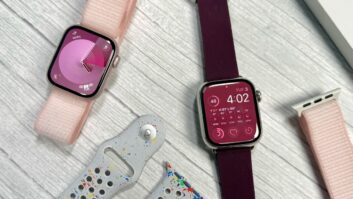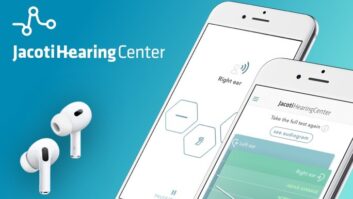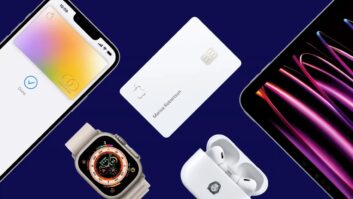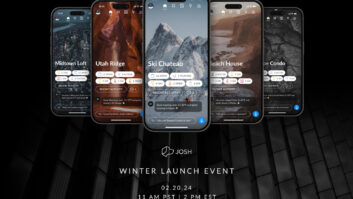Rival carriers approached the Apple/AT&T Wireless launch of the iPhone as just another day in the life of the cellular industry, but analysts and the consumer press didn’t, judging by the amount of attention they devoted to the launch.
T-Mobile, Verizon Wireless and Sprint didn’t change their marketing and promotion routines in the weeks preceding and following the iPhone’s June 29 launch through Apple-owned and AT&T-branded stores, carrier spokespeople told TWICE.
“It was business as usual for us,” a Verizon spokeswoman said. “One new entrant doesn’t change how you approach the business.” New, sleeker LG-made Chocolate music phones that went on sale July 9 were planned well in advance, she noted. The iPhone launch “helped us make our music products much more visible,” she said, although she wasn’t certain whether the publicity inspired a music-phone sales surge.
Likewise, a Sprint spokesman agreed that “more awareness is good for the industry and for Sprint.” He also said that, because of Sprint’s past aggressiveness in the music-phone market, “it makes sense during this time period that there will be more announcements from Sprint, but none are tied to what the competition is doing,” he said. One such announcement is the July 15 availability of LG’s Muziq music-phone, joining the LG Fusic as the only music phones with FM transmitter to play music through a home or car stereo system. Its launch will expand Sprint’s portfolio of over-air music-downloading phones to 14, the company said.
For its part, T-Mobile would say only that “innovation is flourishing right now across all handset manufacturers” and that “T-Mobile’s strategy is focusing laser-like on helping people connect with those who are most important to them.”
Analysts clearly had more to say about the iPhone than AT&T’s rivals did.
iSuppli, for example, projected worldwide iPhone sell-in to hit 4.5 million units worldwide in 2007, including sell-in sales in Europe, where iSuppli expects the iPhone to go on sale in the fourth quarter. Up to 80 percent of 2007 sales, however, will occur in the U.S., said iSuppli analyst Jagdish Rebello. Worldwide sales will hit more than 30 million by 2011, iSuppli also forecast.
Goldman Sachs analysts said sales during the first weekend of sales “blew through our expectations” and were at least twice that of their previous estimates of 350,000 sales over the weekend. The analysts increased their iPhone forecast to 5.25 million for calendar 2007 and 12 million for 2008, up from 4 million and 10.5 million, respectively. AT&T and Apple did not release sales statistics.
iSuppli also provided manufacturing cost estimates showing that the iPhone phenomenon, in 2007 alone, will generate more than $1 billion in gross hardware profits for Apple and its carrier partners, based on its estimates of manufacturing cost and the bill of materials but excluding royalties, marketing/logistics expenses, and any profits obtained by carriers in activating new subscribers.
For the $599 8GB iPhone, iSuppli estimates manufacturing cost and a bill of materials of $264. That allows for a gross profit of $335 per 8GB phone. iSuppli told TWICE that the costs of the 4GB iPhone are $240, allowing for a gross margin of $259.
If 2007’s projected 4.5 million unit sales are equally split between the 4GB and 8GB versions, then gross profit would hit more than $1.34 billion, the iSuppli numbers show.
At least initially, sales of the 8GB versions have exceeded 4GB sales, iSuppli’s Rebello told TWICE, because the first wave of buyers consists of Apple “diehards.” As the second wave of buyers enters AT&T and Apple stores, a greater percentage will choose the 4GB version, he said.
Goldman Sachs analysts estimated that iPhone buyers overwhelmingly chose the higher priced $599 8GB version of the iPhone instead of the $499 4GB version and bought scads of accessories in the days following the iPhone launch. They also found that Apple’s 164 stores were “well-stocked” in preparation for the iPhone’s Friday night launch, with only 24 stores selling out their inventory by Sunday night. Almost all of the 24 were in California, the report said.
Information on AT&T’s inventories wasn’t included in the report by analysts David C. Bailey and Laura Conigliaro, but an AT&T spokesman admitted that “nearly all of our 1,800 AT&T retail stores sold out on launch day.” The carrier is “regularly restocking inventory to meet ongoing customer demand,” he added.
The Goldman Sachs report also said:
- Comments from Apple store personnel “suggest that the overwhelming majority of units sold” were the higher capacity 8GB $599 model and that “it’s clear that Apple’s own retail outlets had substantially more inventory than their AT&T counterparts.”
- Apple’s point of sale systems and extra personnel kept wait times “surprisingly short.” From Friday night through Sunday, “our checks suggest that Apple was running through groups of 25 buyers in average increments of 10-15 minutes.”
- On the first night of sales, “most people were buying the maximum two phones at Apple stores. AT&T stores limited purchasers to one iPhone each.”
- People left the stores “with handfuls of chargers and cases,” so initial and follow-up accessory sales are likely to “far surpass” the analysts’ original “$30 guesstimate.”
- The weak link was the activation process for consumers porting their cellular number from other carriers to AT&T. The analysts’ “checks suggest that some people needed to wait up to 24 hours to be activated as their requests needed to be handled manually. Also, there seems to be a fair amount of confusion on the AT&T side regarding the features/functions of iPhone.”
Worldwide iPhone Shipment Forecast
Shipments in Millions of Units













